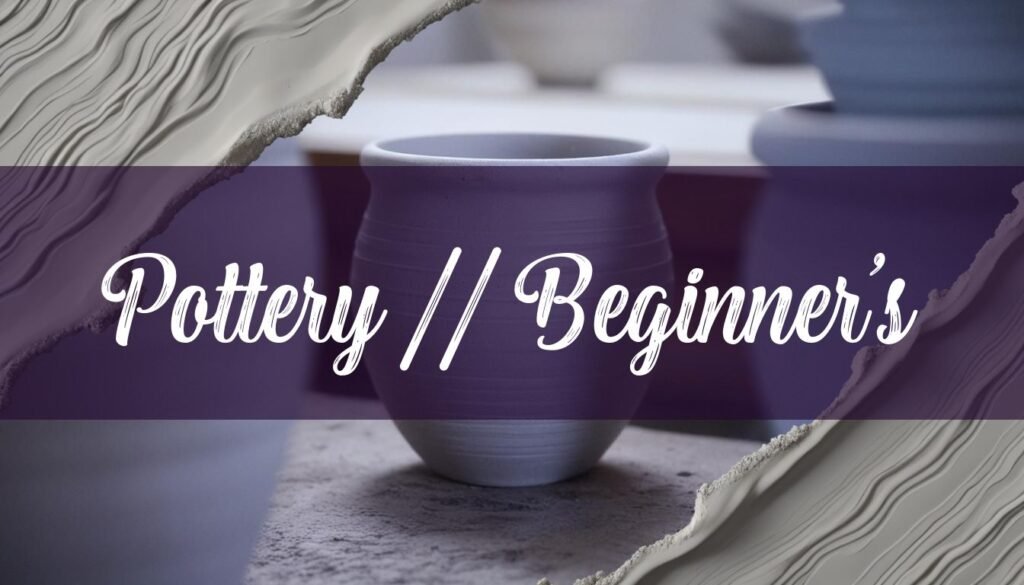To embark on the journey of pottery, a few essential tools and equipment are needed to transform a simple lump of clay into a work of art. This exploration begins with the very earth itself—clay—and expands to encompass the diverse instruments and technologies that shape, refine, and immortalize ceramic creations.
Clay and its Varieties
The foundation of all pottery is, of course, clay. For beginners, earthenware clay stands out as a particularly forgiving and accessible option, known for its ease of use. Earthenware is celebrated for its plasticity, which means it’s supple and easy to manipulate, making it ideal for those just learning to coax forms from the earth. Firing earthenware typically occurs at lower temperatures, generally between 950°C and 1,100°C (1,745°F and 2,012°F). However, it’s important to note that earthenware remains porous after firing unless it’s glazed.
Stoneware is another popular choice, prized for its durability and versatility. It fires at higher temperatures, typically between 1000°C and 1380°C, resulting in a denser, more resilient piece that’s often water-resistant even without glazing. Porcelain, the most refined of clays, stands out with its pure white color and potential for translucence. It demands the highest firing temperatures, often between 1305°C and 1346°C, and is known for being less plastic and more challenging to work with. For those seeking an alternative that bypasses the need for a kiln, air-dry clay offers a convenient solution, hardening naturally over time. If you’re curious about preparing your own materials, you might be interested in how to make clay for pottery. Additionally, understanding what type of clay is used for ceramics can help you make informed decisions for your projects.
Essential Tools for Shaping and Refining
Once the clay is chosen, the next step involves shaping it with a variety of tools. While a pottery wheel is often considered a centerpiece in a pottery studio, especially for creating symmetrical forms, hand-building techniques offer a more direct, tactile experience. Hand-building relies on simple tools like wooden modeling tools, which are invaluable for sculpting, carving, and adding intricate details. A basic metal rib is essential, along with wooden and rubber ribs, the wooden rib being a triangular rib in a hard wood. Loop, ribbon, and wire tools are used for cutting away clay, carving, and creating textures, adding depth and character to the piece. Sponges are indispensable for smoothing surfaces, adding texture, or simply cleaning up. A chamois, a piece of thick cloth or leathery material, is used to smooth and compress the edges of thrown ware. Calipers are useful for measuring the inner and outer dimensions. An apron is a potter’s best friend, especially if they want to protect their clothing from potential damage. A fettling knife looks like a regular knife, except it boasts a flexible blade that tapers to a point, and is a wonderful multi-use instrument for potters.
“An apron is a potter’s best friend, especially if they want to protect their clothing from potential damage.”
The Firing Process and Kilns
The final transformation occurs in the kiln, where the shaped clay is subjected to intense heat, turning it into durable ceramic. The firing process is crucial, with different clays and glazes requiring specific temperatures to mature properly. Earthenware, stoneware, and porcelain each have their ideal firing ranges, and understanding these temperatures is key to achieving the desired results. For those without access to a kiln, alternative firing methods like raku or pit firing can be explored, though they often require more hands-on involvement and outdoor space. Each firing technique impacts the final look of a ceramic piece and allows for creativity in the final form.
Whether one chooses the path of a wheel-throwing or prefers hand-building techniques, a journey into pottery promises artistic expression, and a grounding connection to the earth.





